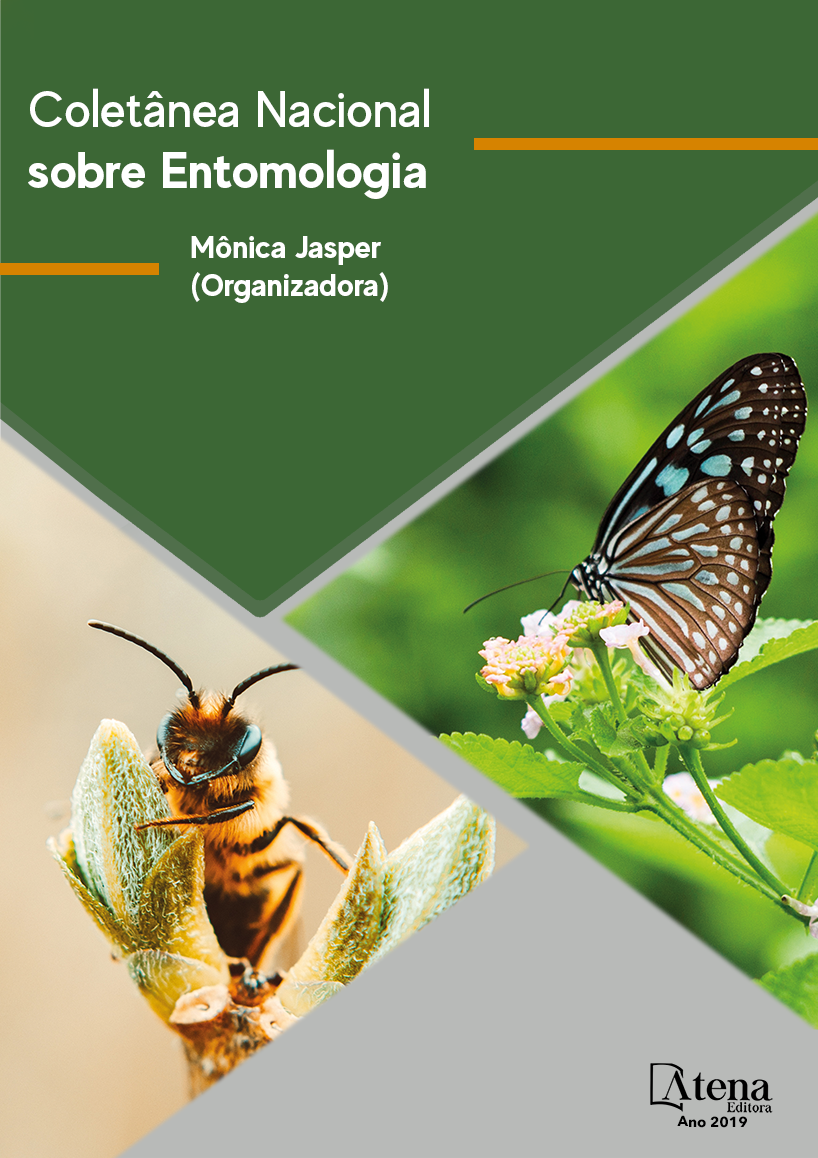
Áreas brasileiras aptas a ocorrência mensal de Thaumastocoris peregrinus em Eucalyptus spp.
Este trabalho avaliou a aptidão de
áreas brasileiras com Eucalyptus spp. à maior
ocorrência mensal do percevejo bronzeado
Thaumastocoris peregrinus (Hemiptera:
Thaumastocoridae). Essa praga australiana, no
país desde 2008, ainda demanda estratégias
de manejo local. O monitoramento contínuo
do inseto e o conhecimento de seus aspectos
biológicos em áreas de plantios de Eucalyptus
spp. no país permitiram determinar fatores
abióticos associados à sua maior presença
populacional. A existência de condições
climáticas diferenciadas nas Unidades da
Federação (UF) brasileiras produtoras de
eucalipto propiciam a ocorrência do inseto
em meses distintos durante o ano. Assim,
informações territoriais mensais podem auxiliar
as ações de manejo locais. Cruzamentos
georreferenciados (ArcGIS) mensais foram
realizados considerando as áreas das UF, com
eucalipto em 2016, bem como suas respectivas
médias mensais de fatores abióticos registrados
de 1961 a 2014 e malhas municipais. Faixas
climáticas de temperaturas e umidade relativa
associadas a maior presença do inseto foram
também consideradas. Mapas mensais obtidos
facilitaram identificar períodos diferenciados
de aptidão à ocorrência do inseto nas UF.
As percentagens de áreas aptas municipais
mensais, por UF, foi classificada em cinco
categorias (de “muito baixa” a “muito alta”).
Bahia, Espírito Santo, Minas Gerais, Rio de Janeiro e São Paulo são aptos à maior
ocorrência mensal do inseto durante todo o ano, variando nas intensidades de
municípios aptos. Surtos esporádicos ou consideráveis variações nos percentuais de
aptidões municipais foram observados em outras UF. A aptidão mensal regional da
praga foi avaliada, sendo mais acentuadas no Sudeste e Sul, embora observadas nas
demais regiões.
Áreas brasileiras aptas a ocorrência mensal de Thaumastocoris peregrinus em Eucalyptus spp.
-
DOI: 10.22533/at.ed.5041909077
-
Palavras-chave: defesa fitossanitária; praga exótica; sanidade vegetal; florestas; Brasil.
-
Keywords: crop protection; exotic pest; plant protection; forest; Brazil
-
Abstract:
The present work evaluates the suitability of Brazilian areas with Eucalyptus
spp. toward the monthly main occurrence of bronze bug Thaumastocoris peregrinus
(Hemiptera: Thaumastocoridae). This Australian pest, in the country since 2008, still
demands strategies of local management. Continuously monitoring of the insect and the
knowledge of its biological aspects in planting areas of Eucalyptus in the country have
already allowed determining the abiotic factors associated to the main presence of its
populational peaks. The differentiated climatic conditions present in Brazilian Federal
Units (UF) producers of eucalyptus are propitious for the insect occurrence in distinct
months during the year. Therefore, monthly territorial information would assist local
monitoring actions. Monthly georeferenced-crosses (ArcGIS) were done considering
the Federal Unit areas, with Eucalyptus in 2016, as well as their respective monthly
climatic averages of abiotic factors registered from 1961 to 2014 and municipality grid.
Climatic ranges of temperatures and moisture associated with greater presence of the
inset were also considered. The monthly maps obtained facilitated the identification
of distinct periods of aptitude for the insect occurrence in each UF. Percentages of
municipality monthly suitable areas, by UF, were classified into five categories (from
“very low” to “very high”). Bahia, Espírito Santo, Minas Gerais, Rio de Janeiro, and
São Paulo are apt to a greater monthly occurrence of the insect during all the year,
varying in the intensity of favorable municipalities. Sporadic outbreaks or considerable
variations in the percentages of municipality favorabilities were observed in other UF.
Monthly regional aptitude of the pest was evaluated, being more accentuated in the
Southeast and South, although also observed in the other regions.
-
Número de páginas: 15
- Maria Conceição Peres Young Pessoa
- Rafael Mingoti
- Jeanne Scardini Marinho-Prado
- Luiz Alexandre Nogueira de Sá
- Laura Butti do Valle
- Elio Lovisi Filho
- Giovanna Naves Beraldo
- André Rodrigo Farias


